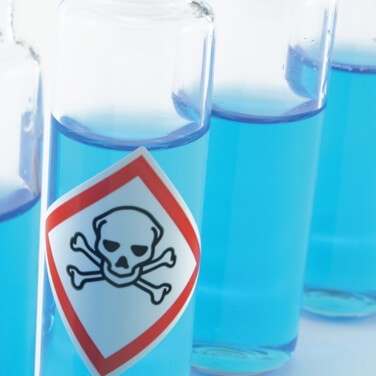Nail Salons Hazardous for Workers
By Christina Phillis
A new study at the University of Colorado Boulder found that nail salon workers are at an increased risk of serious health issues.
Researchers monitored the levels of volatile organic compounds (VOCs) in six Colorado nail salons, and found high levels of formaldehyde, benzene, and other indoor pollutants. Although the presence of VOCs in nail salons is well known, this is one of the first studies to evaluate the effects of long-term exposure on workers.
“The study provides some of the first hard evidence that these environments are dangerous for workers and that better policies need to be enacted to protect them,” said Lupita Montoya, lead author and research associate in CU Boulder’s Department of Civil, Environmental and Architectural Engineering.
Study authors likened the working conditions in nail salons to those in oil refineries or automobile repair shops.
Hazardous Conditions
Researchers measured levels of benzene, toluene, ethylbenzene, xylenes (BTEX), and formaldehyde. Benzene, a compound linked to leukemia, was present in all six salons in higher-than-expected concentrations. Formaldehyde levels were similar to those measured in other settings.
This information, combined with the employment and safety practices and health symptoms reported by study participants, makes the situation especially concerning. Workers reported clocking an average of 52.5 hours per week, with some working as much as 80 hours per week. The majority (70%) reported at least one adverse symptom: headaches, skin irritation, or eye irritation.
According to the U.S. Environmental Protection Agency (EPA), long-term exposure to carcinogenic compounds like those commonly found in nail salons significantly raises the chances of workers developing leukemia and Hodgkin’s lymphoma. The study also found that the lifetime cancer risk for workers in some salons was up to 100 times higher than baseline EPA-issued predictions.
"Study authors likened the working conditions in nail salons to those in oil refineries or automobile repair shops."
Customers do not face the same level of risk, since the duration of their exposure is significantly lower, but clients who are pregnant or suffer from serious asthma are at a greater risk than others.
“It really depends on how much time you spend in and around that environment,” Montoya said. “Customers spend a fraction of the time in salons that workers do. Unless they have pretty severe allergies or asthma, there’s not much for customers to be concerned about.”
Creative Solutions
For the majority of nail salons, solutions to correct this situation may be problematic. Many are small businesses that employ mostly minority populations and don’t have the financial resources to resolve these issues. Study authors enlisted the help of engineers and artists to develop low-cost systems that could be installed in a nail salon without disrupting business.
One idea involved using absorbent materials like heat-treated coal or wood to remove VOCs from the air. Materials like these have a strong affinity for organic molecules like BTEX compounds. The only downfall is that this process can take a long time. “We’ve seen high rates of VOC removal with this method in controlled lab settings — nearly 100%,” said Lamplugh. “We’re still optimizing it for the field, where conditions are more unpredictable.”
Another option under development is the use of activated carbon-based materials to create gallery-worthy artwork for the walls. Small jets at the end of each table could direct chemical fumes toward the artwork, allowing it to absorb harmful substances while creating a pleasant atmosphere.
Combining science, technology, and art is not only beautiful, it can be a practical and effective way to tackle real-world issues outside of the lab.



